Background
This article is intended for growers whose grows have not yet entered the flowering phase. Also, the information is required reading for gardeners who are just planning to cultivate cannabis indoors. If you think that the time has not come to study this information, just leave yourself an article in the useful browser bookmarks. It will definitely come in handy!
How to increase the yield of plants that have started flowering? If you did not take any measures for this during the veg, then consider that you have one last chance. And it cannot be missed. Moreover, there are several ways to influence the final harvest. This material considers in a comprehensive way not only effective solutions for growing in the color phase, but also in the process of blooming (the beginning of bud formation).
So, let's say your wards plants have begun to actively form buds, what can you really do to increase yields at this stage of grow? Sequentially, see all the methods below.
1.Increasing the light intensity
It is no secret that light is actually a recharge and, therefore, a transfer of vital energy. Simply put, your plants can produce larger buds if they receive more light output. Nothing supernatural. everything is obvious and understandable.
3 main ways to increase light intensity
Install more better light.
It is extremely important to keep the source as close as possible without overloading the plant with light.
Train your shoots to develop horizontally under light. Growth training allows you to keep the light as close as possible without burning the highest kidneys.
When cannabis is surrounded by vegetation, it actively responds by trying to get taller in order to gain access to better lighting.
2.Use the right light sources during the flowering stage
For the best yields, density and bud size, you should use a good quality cannabis LED grow light while buds are forming:
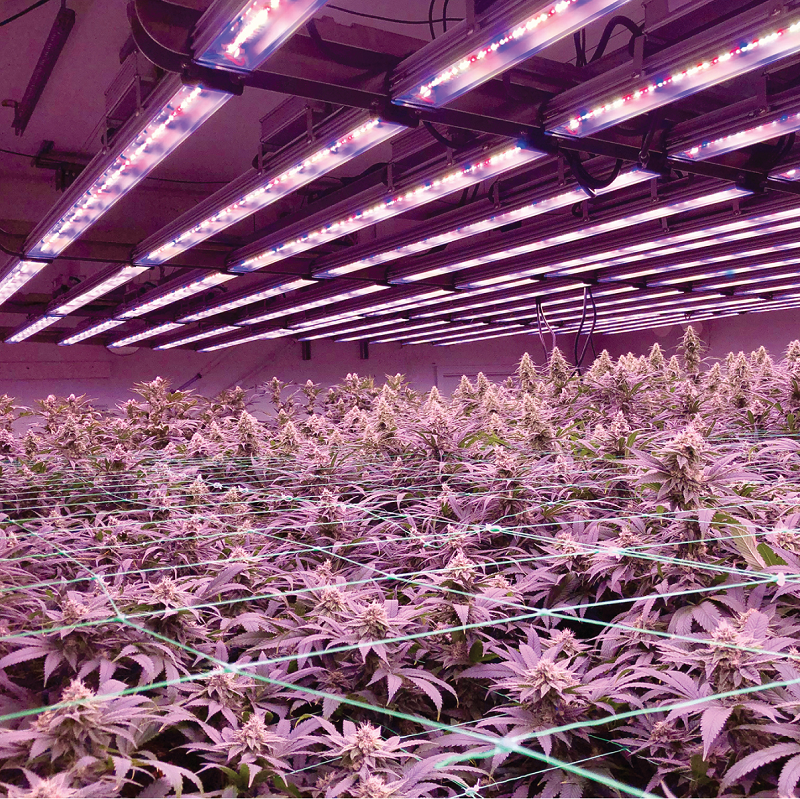
3.Provide the correct light spectrum during bud formation
Getting more red light of different wavelengths during the flowering phase works much more efficiently with blue light bulbs.
Choose cannabis LED grow lights that include the following diodes:
white;
red;
"Long" red (far-red).
As a rule, such lamps in the description contain a definition of the light temperature of 3000K or indicate "far-red" as an indicator that the entire required spectrum is present here. Visually, this light appears pink, yellow, or slightly reddish.
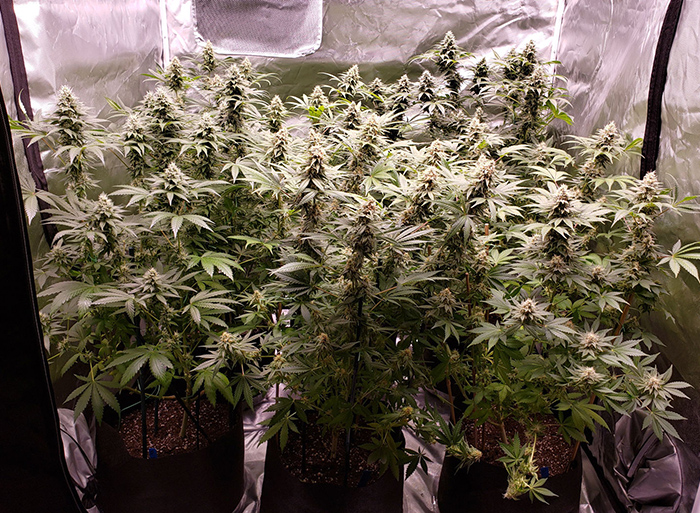
Cannabis plants grown under the 480W GLMX480 cannabis LED grow light look very attractive.
LEDs that don't have much white ("blur") may or may not work. Only use dimmable cannabis LED grow lights if you have a real-life example of another grower having success with similar equipment. Experimentation on technical issues is encouraged, but only with a clear knowledge of deep processes and really massive grow.
Cannabis LED grow light usually needs to be kept at least 40 centimeters above your plants to prevent bleaching and burns.
4.Follow the recommended defoliation schedule
Most growers use targeted strategic defoliation to maximize their yield. This term refers to the process of removing specific leaves at specific points in bud development. It actually "hacks" the natural processes of the plant and causes the buds to become larger and denser than they would normally be. This technique is most effective on seedlings of varieties with an increased amount of green mass. If your plant does not have many extra leaves, defoliation can, on the contrary, slow down growth, so do not get too carried away with this manipulation.
The basic idea behind soil defoliation is the following:
Beginning of the flowering stage (weeks 1 to 3): Remove all large and fanned leaves on long stems. This exposes your newly developing bud structures to direct light. The kidneys need direct light to enlarge.
3 weeks later, do another defoliation, only if the plant appears to be thick. Exposing the main branches to direct light will help the plant "focus" on bud development.
After the 2nd major defoliation, remove only the leaves that cover the bud or if the plant becomes too dense in the middle and bottom of the bush.
You will see that the buds are getting huge and a chic harvest is just around the corner!
This grow has just been switched to 12/12 mode. This is what he looked like before defoliation.
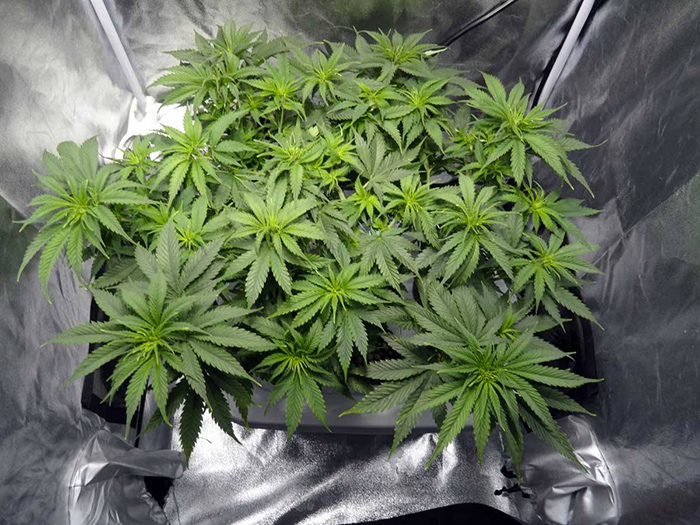
Immediately after defoliation.
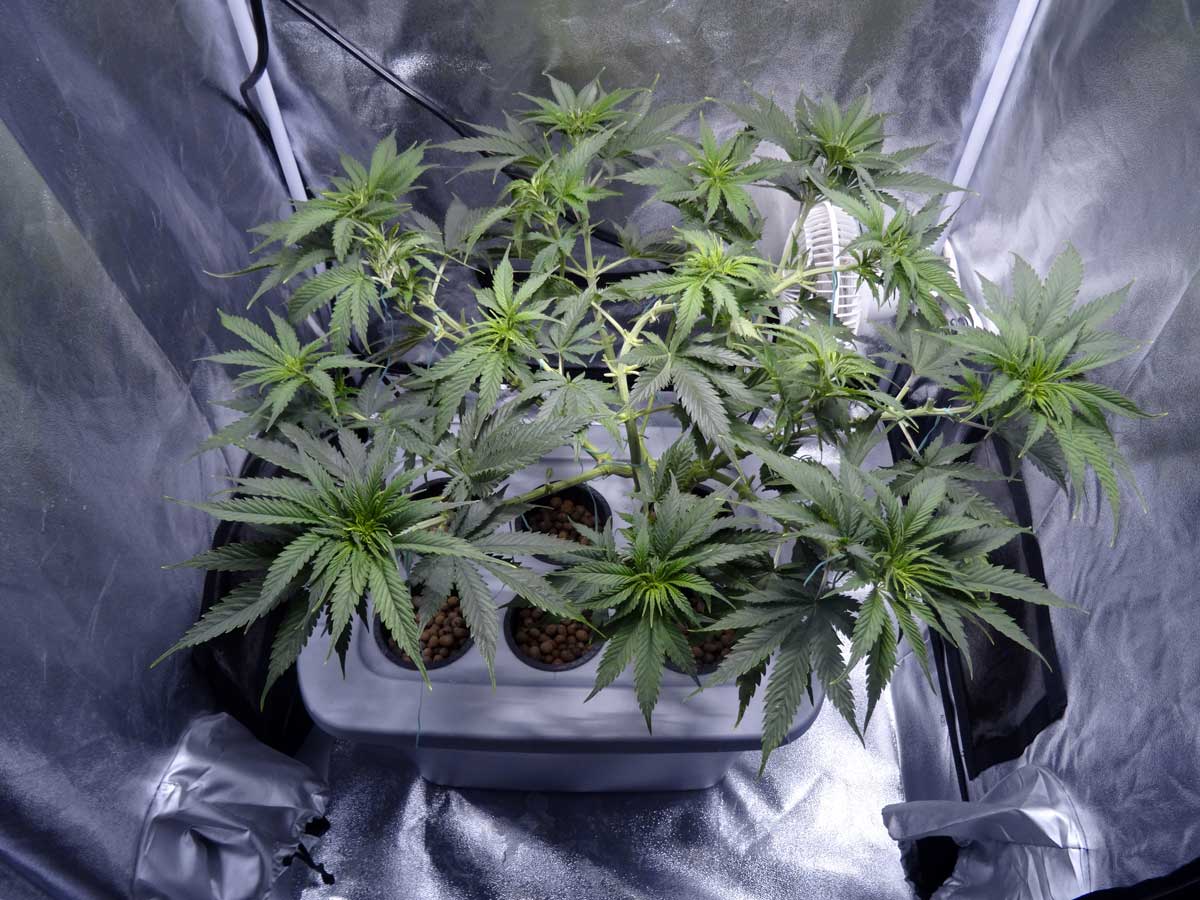
3 weeks later.
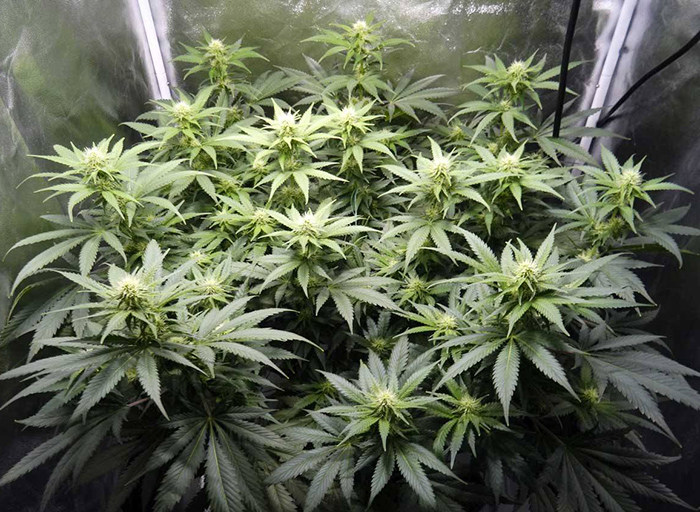
Second defoliation.
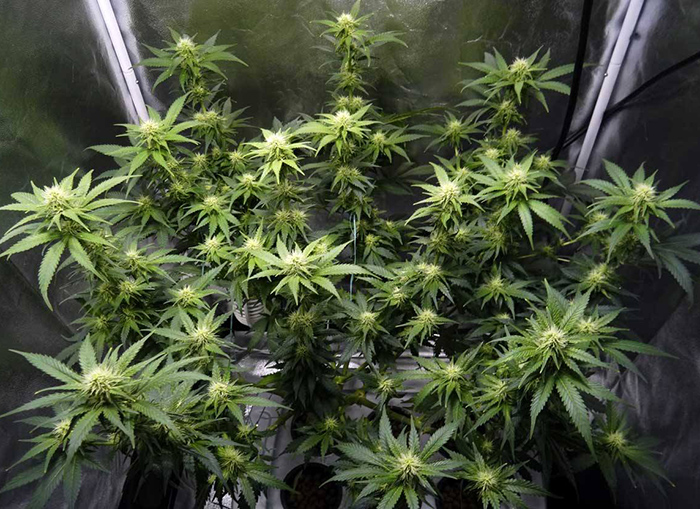
Seven weeks later.
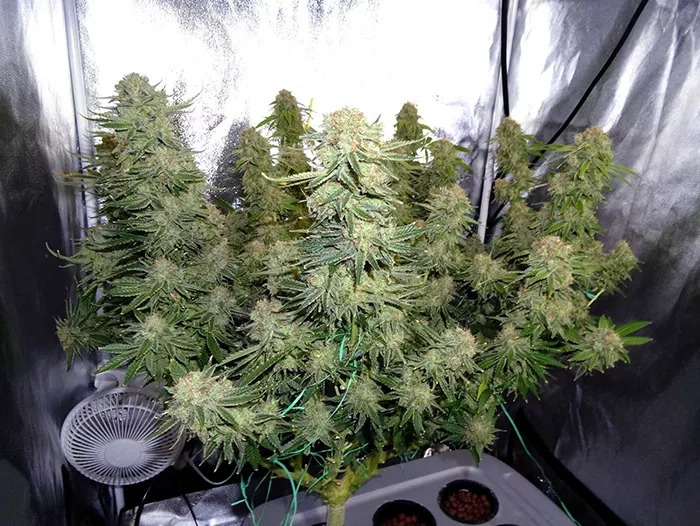
The gorgeous result is more than obvious!
Attention! The defoliation schedule outlined above is fairly typical for most indoor growers, regardless of the variety chosen by the grower.
Nevertheless, the timing of certain manipulations may shift depending on the mass of factors (mainly, the cultivation conditions).
5.Don't ignore the problems that arise!
Moving into the flowering phase, plants become more demanding on the ratio of nutrients and their nutritional value in general. Make sure you quickly diagnose and correct any nutrient deficiencies, insect attacks, disease or other visible problems. An unhealthy plant lacks energy for bud formation.
Identify and correct plant problems immediately so that crops are not harmed. In the photo below, the plant is showing signs of mild stress from being too close to the light.
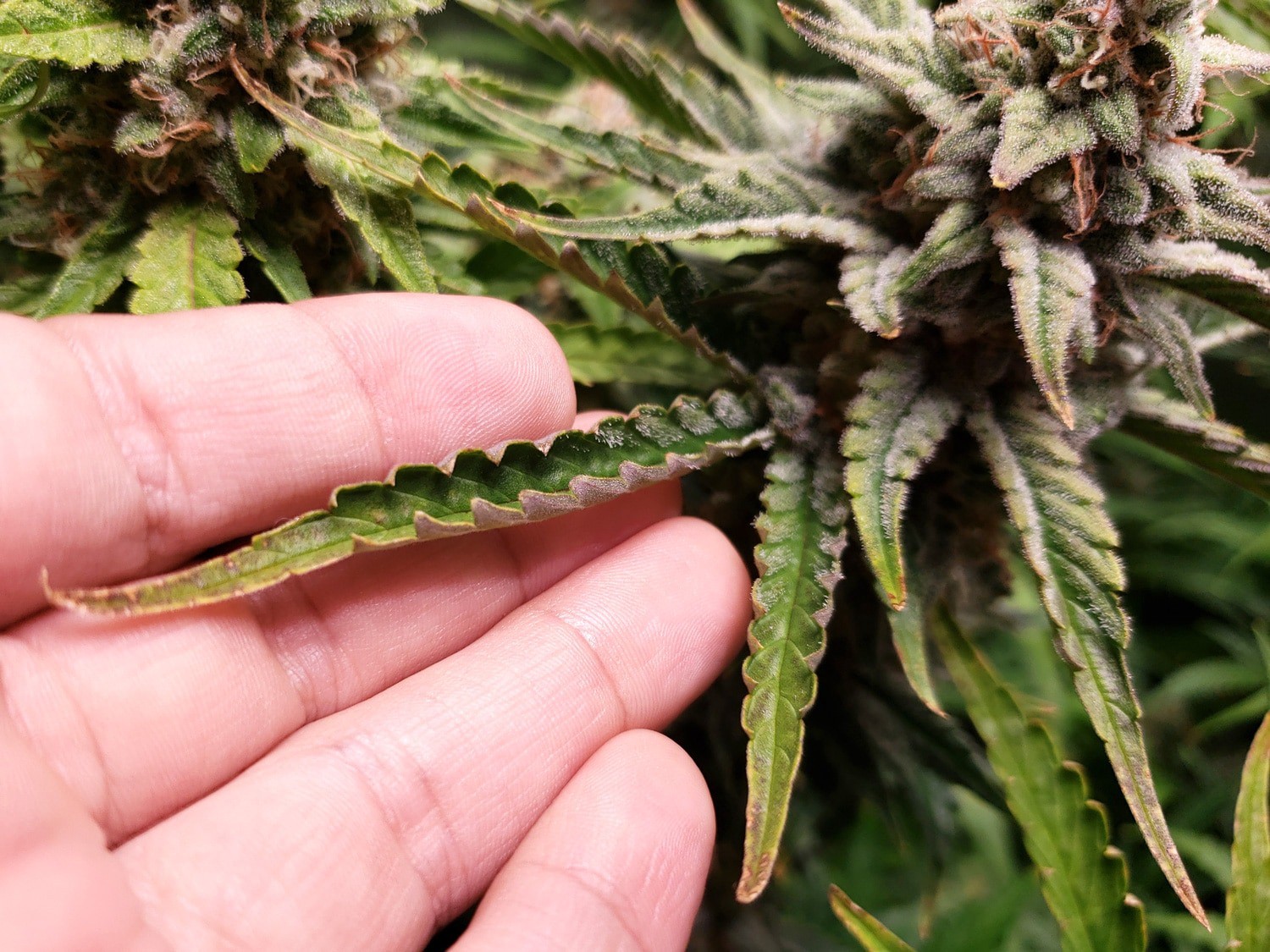
The cannabis leaves in the photo are so light that the edges are curved upward. And they themselves became crispy and dry.
6.Create an optimal environment for cannabis cultivation
There are several key factors to keep in mind. They primarily concern the microclimate of your grow room / grow box during the flowering stage. If you really want to maximize your yield, consider the following triggers:
Temperature - Maintain temperatures between + 18 ° C and + 26 ° C if possible. Elevated temperatures are associated with loose or "airy" buds, weaker bud odor, reduced immunity, mold formation,insect infestation (especially if the buds are also wet).
Humidity - Don't let the environment get too humid after the buds begin to develop. High humidity leads to mold attacks and rotting of the buds, and can also inhibit their growth. as dense / large (high humidity makes it difficult to effectively move water through key plant nodes).
Specularity - When the interior of the growroom / growbox has reflective walls, it prevents light loss. There are many options for increasing reflectivity, such as painting the walls with white paint or covering them with mylar sheet. Providing more light to your plants will help your buds grow intensively.
Air circulation - In addition to maintaining the correct temperature and humidity, it is important to give your plants a breeze and plenty of fresh air. Effective air circulation prevents many problems and accelerates plant growth, resulting in better overall yields.
Add extra CO2 to the air - some growers add extra carbon dioxide to the air to increase yields. Plants need CO2 for photosynthesis, and (in certain situations) adding carbon dioxide to the air can allow your plant to get more energy from the same amount of light. There are many different ways to increase CO2 levels, some of which are more effective than others!
The mass of cannabis growers are focused on trying to find new nutrients and additives to increase yields, but ignore the current environmental concerns. If the environment created isn't ideal, focusing on the tips above will likely make a much bigger difference to your crop than any product you can buy in a container.
7.Timely harvest
Most importantly, don't start harvesting too early! Pay attention to this thesis: it is in the last two weeks before the peak of maturity that cannabis buds gain significant weight. Let this become an unshakable rule for you and the result will not be long in coming.
Harvesting even a few weeks earlier can cut the final harvest in half! Plus, the bots won't be as strong, shiny and aromatic. Do not be convinced of this on your own experience, trust the growers.
The cannabis plants are ready to harvest when most of the white hairs on the buds have darkened and curled.

It is not uncommon for experienced growers to check sparkling trichomes under a magnifying glass to make sure the timing is right for harvest.
8.Make the growing process continuous
This advice is not specific to the flowering phase, but its significance cannot be overemphasized. After all, if you do not make pauses between harvests, then the grower will receive the finished product of different varieties continuously and all year round. Of course, we do not mean that every day you will have a harvest (although this is possible, but extremely laborious). Nevertheless, the cyclical nature of the processes and the absence of pauses in the growing process give amazing results and it is quite possible that soon you will simply have an excess of stuff. But we all know what you can do with it;)
Interestingly, it is not uncommon for cannabis growers to equip at least two work spaces, thus ensuring a continuous harvesting process.
The final
Continuing the thought of incessant processes, it is extremely important not to stop developing and constantly learn. Amazing discoveries happen almost every day, which means there is always more to learn about growing and increasing yields!























